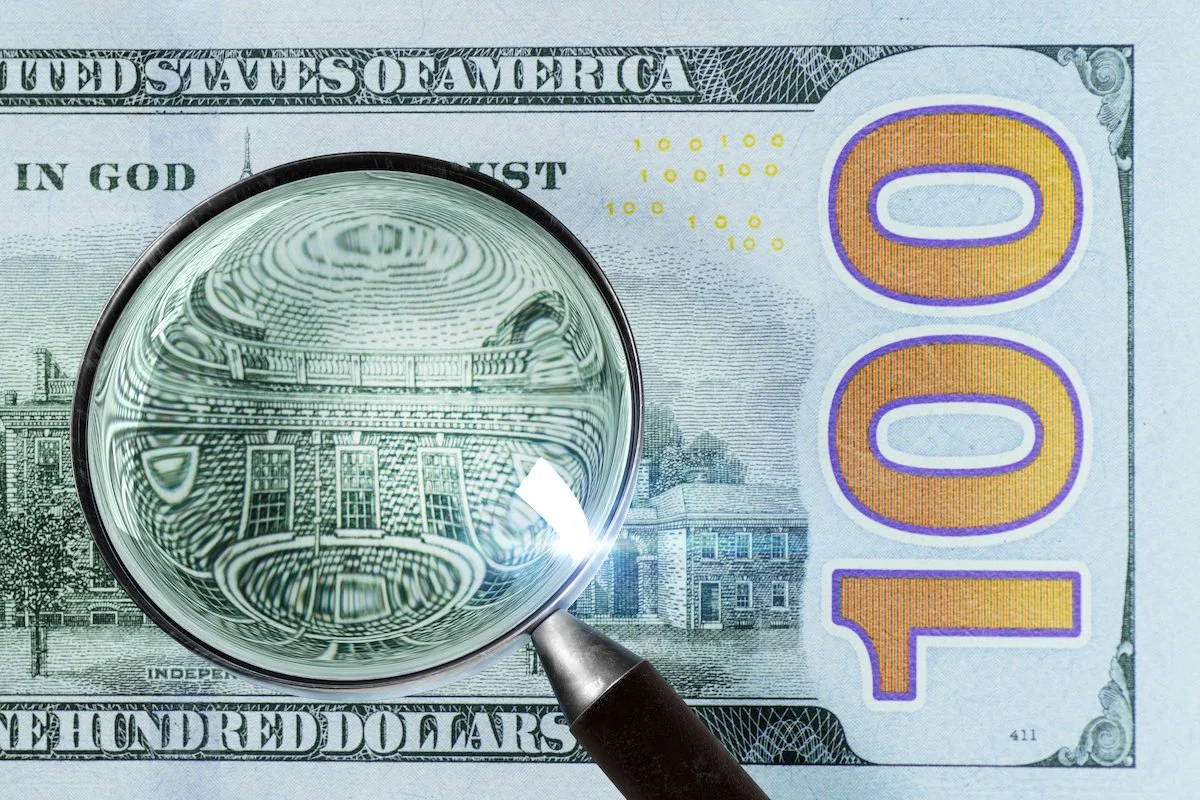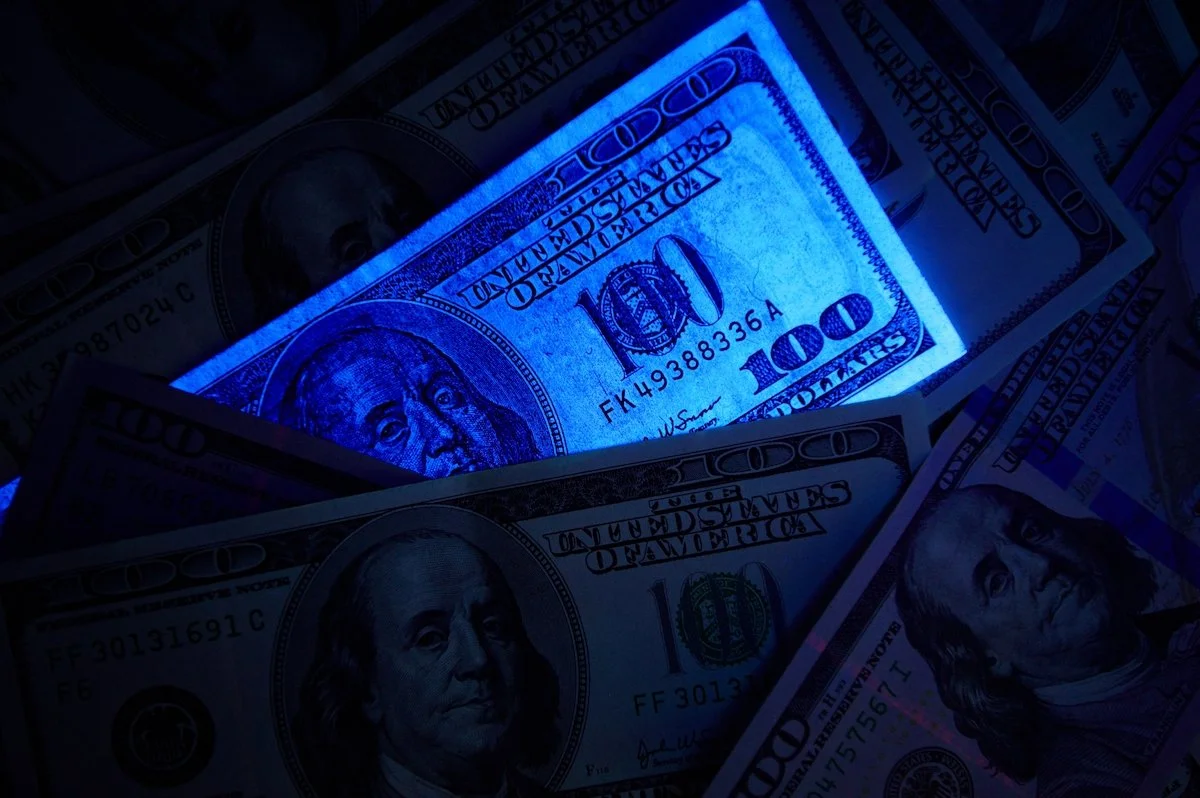Counterfeit Currency - USD
Languages: English
Media Editing: This subject does not contain any editable media.
Description: As technology improves, fraudsters are getting better at counterfeiting bank notes. This results in an increase in fraudulent transactions and lost revenue across various industries, since everyone needs to get paid. This subject teaches learners how to detect counterfeit U.S. currency using a variety of techniques and security features. This covers fraudulent transactions associated with U.S. bank notes issued from 2003 to present.
Languages: English
Media Editing: This subject does not contain any editable media.
Description: As technology improves, fraudsters are getting better at counterfeiting bank notes. This results in an increase in fraudulent transactions and lost revenue across various industries, since everyone needs to get paid. This subject teaches learners how to detect counterfeit U.S. currency using a variety of techniques and security features. This covers fraudulent transactions associated with U.S. bank notes issued from 2003 to present.
Languages: English
Media Editing: This subject does not contain any editable media.
Description: As technology improves, fraudsters are getting better at counterfeiting bank notes. This results in an increase in fraudulent transactions and lost revenue across various industries, since everyone needs to get paid. This subject teaches learners how to detect counterfeit U.S. currency using a variety of techniques and security features. This covers fraudulent transactions associated with U.S. bank notes issued from 2003 to present.
Topics
Detecting Counterfeit U.S. Bills: Look and Feel
-
Counterfeiters are getting better and better at creating U.S. bills that look and feel real at a quick glance, so knowing what makes a U.S. bill authentic is important to prevent lost revenue. In this topic, learners will be taught how to authenticate U.S. bills, issued from 2003 to present, by look and feel. This includes knowing what genuine U.S. bills should feel like, and how color-shifting ink and microprinting appear on genuine bills.
-
Questions (level 1, 2, 3)
-
This topic is currently available in English.
-
The quickest way to check the authenticity of a U.S. bank note is to feel the paper.
Genuine U.S. bank notes will be rough to the touch from the printing process. Notes that are unusually smooth or glossy may be counterfeit.
Color-shifting ink is present on genuine U.S. bank notes $10 and higher, in the lower front right denomination.
Tilt U.S. bank notes $10 and higher, forwards and backwards, left and right, to check the color-shifting ink shifts from copper to green.
Tilt U.S. $100 bank notes to check for a color-shifting bell in the inkwell to the right of the 3-D security ribbon.
Tilt U.S. $100 bank notes to check for a 3-D security ribbon with shifting images of 100s and bells to the right of the portrait.
Use a magnifying glass to check the location and specific text of the microprinting on U.S. bank notes $5 and higher, as different words are placed in different locations for each denomination.
Use a magnifying glass to check for errors in the microprinting, such as blurred edges or misspelled words, on U.S. bank notes $5 and higher, as this could indicate the bill is counterfeit.
Compare suspicious U.S. bank notes to notes you know to be authentic if you are unsure about the results from any authentication method.
Follow your organization’s policy for reporting counterfeit U.S. bank notes. Some examples include: notifying your manager, notifying your loss-prevention representative, or calling your local law enforcement authority.
Preview of topic image for “Detecting Counterfeit U.S. Bills: Look and Feel” as this topic is questions only.
Detecting Counterfeit U.S. Bills: Check with Light
-
Not all security features are visible with the naked eye; placing U.S. bills under a light/UV light, can reveal hidden features. In this topic, learners will be taught how to use a light/UV light to authenticate U.S. bills, issued from 2003 to present. Particular attention will be placed on U.S. $20, $50, and $100 bills, as these tend to be counterfeited more often and can result in the biggest losses.
-
Questions (level 1, 2, 3)
-
This topic is currently available in English.
-
Use a light to check two security features of U.S. bank notes: the watermark and the security thread.
Hold U.S. bank notes $5 and higher up to a light to check both sides of the note for watermarks that match their portrait, or their numeral (in the case of the $5).
Hold U.S. bank notes $5 and higher up to a light to check both sides of the note for a vertical security thread.
U.S. bank notes $5 and higher have security threads which contain specific text unique to each denomination’s thread, in a specific spot on each denomination.
A U.S. $20 bank note’s security thread is on the far-left side of the portrait and displays the text “USA TWENTY” with a small flag when held under a light.
A U.S. $50 bank note’s security thread is on the right side of the portrait and displays the text “USA 50” with a small flag when held under a light.
A U.S. $100 bank note’s security thread is on the left side of the portrait and displays the text “USA 100” when held under a light.
Use a UV light on U.S. bank notes $5 and higher to check the color of the security thread, as each denomination glows a specific color.
A U.S. $20 bank note’s security thread will glow green under a UV light.Enter Here
A U.S. $50 bank note’s security thread will glow yellow under a UV light.
A U.S. $100 bank note’s security thread will glow pink under a UV light.
Preview of topic image for “Detecting Counterfeit U.S. Bills: Check with Light” as this topic is questions only.



